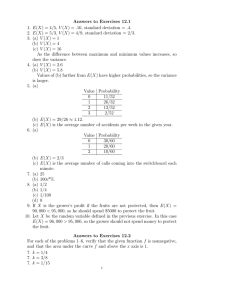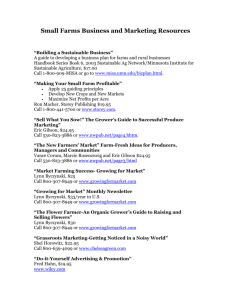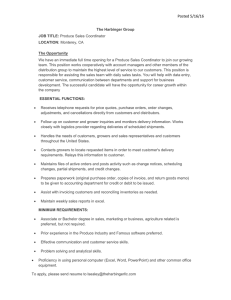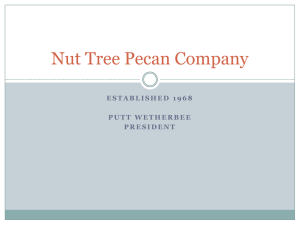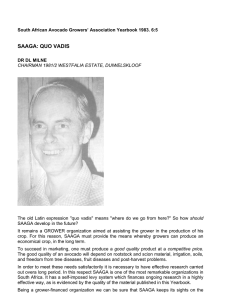Taking Biosecurity Measures to Limit Your Legal
advertisement
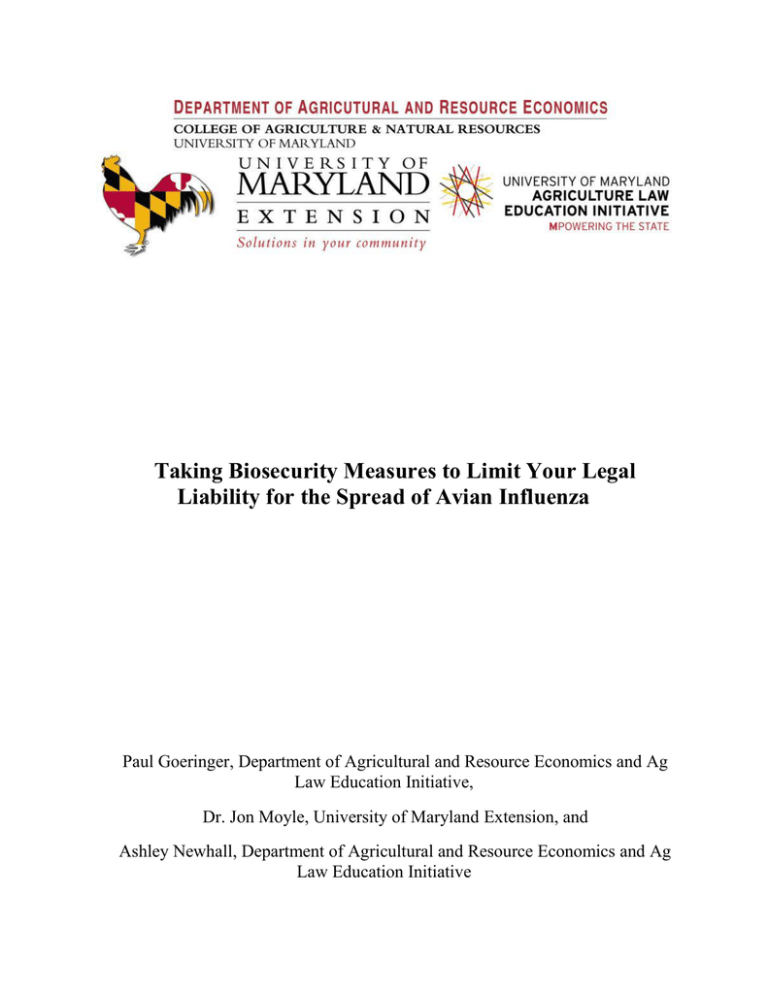
Taking Biosecurity Measures to Limit Your Legal Liability for the Spread of Avian Influenza Paul Goeringer, Department of Agricultural and Resource Economics and Ag Law Education Initiative, Dr. Jon Moyle, University of Maryland Extension, and Ashley Newhall, Department of Agricultural and Resource Economics and Ag Law Education Initiative This should not be construed as legal advice The possibility of an avian influenza (AI) outbreak on the Delmarva is a scary possibility. The recent AI outbreak in the Midwest has resulted in the infection of over 48 million birds on 223 farms. Infected birds are euthanized to help contain the disease, resulting in large economic loss to both the grower and integrator. With this in mind, poultry growers and companies often have questions about potential liability if AI breaks out on one farm (Grower A) and then on a neighboring farm (Grower B). Could Grower A be liable to Grower B for damages caused by the disease? Under the traditional view, Grower A would not be liable for the spread of the disease unless it was shown that Grower A was negligent. Growers, poultry companies, and contractors practicing biosecurity measures can demonstrate he/she was not negligent and is working to prevent the spread of AI. Negligence Negligence is simply failure to exercise a duty of care under the circumstances. This means that you failed to act as a reasonable and prudent person would have in the same situation. Courts have found that negligence has four elements which need to be proven: 1. Party owed a duty of care to act reasonable under the circumstances to the injured party; 2. Party breached that duty of care; 3. Breach was the proximate cause of the injury; and 4. Actual damages occurred. When looking at negligence in a livestock contagious disease situation, a grower would have a duty to conduct the operation in a reasonably safe way and in a reasonable fashion to prevent a contagious disease from spreading to neighboring operations. Breaching that duty would come from failure to practice good biosecurity protocols to prevent the spread of AI. The 1 proximate cause of the breach would be from the failure to practice biosecurity, causing a neighboring landowner to have an outbreak of AI. Actual damages would be shown through loss of income due to loss of birds from the decontamination process. For example, Grower A is concerned he has AI in a house and calls neighbor, Grower B, to compare birds. Grower A enters Grower B’s poultry house without cleaning his boots or putting on booties, gloves, or any other protective gear. A few days later, Grower B’s birds show signs of AI. Grower B could potentially recover from Grower A in a lawsuit for negligence. In another example, a poultry integrator sends out feed trucks to visit multiple growers in a single day. Feed truck operator does not wash the truck off before entering a new farm nor does the driver wear protective footwear when out of the truck on each farm. Operator delivers feed to Grower A and then to Grower B, and both growers later develop avian influenza. Both growers could potential recover from the poultry integrator for negligence if the integrator did not follow appropriate biosecurity practices. One last point on negligence: Maryland and Virginia still recognize the defense of contributory negligence. Contributory negligence is based on the idea that the injured party also owes a duty of care to himself or herself and breaching that duty is significant enough to bar the injured party from recovering damages. Looking at the first example, if negligent Grower A can show that Grower B also does not have established biosecurity practices, this would potentially be enough to bar Grower B from recovering damages. Delaware, however, no longer recognizes this defense. 2 Although we have few reported cases involving disease outbreaks in poultry, it is important to realize implementing biosecurity practices is one way to demonstrate that you were not acting negligently. Additionally, if both growers and companies implement good biosecurity practices it can also help lessen the impact of AI in our region if it appear in our region. Biosecurity Practices One way to demonstrate you are operating to prevent the spread of a contagious disease, such as A.I., is through adopting biosecurity practices. These practices can limit the spread of diseases and limit farm-to-farm outbreaks. These practices are good for growers, companies, and contractors who may be coming on poultry farms. The National Chicken Council has suggested the following practices: Limiting visitors on the farm and minimizing foot traffic; Avoiding contact with wild and domestic fowl; Avoiding the sharing of farm equipment; Having a clean and functioning footbath at each entrance to the broiler house; Ensuring that all visitors or personnel have disinfected or new footwear before entering a house or facility; Making sure feed and water sources are covered and free of contaminants, limiting the attraction of wild fowl and pests; Having official signage clearly stating the farm is a biosecure zone and any unauthorized entry is strictly prohibited; Employing effective pest and wild bird management practices; and Adequately training farmers, farm and company personnel in biosecurity and disease prevention. 3 USDA’s Animal Plant Health Inspection Service has a webpage dedicated to biosecurity practices for poultry (http://1.usa.gov/1OtaT7p). Craig Coufal, Texas A&M Agrilife Extension, has developed a factsheet covering Avian Influenza and Biosecurity Practices (http://bit.ly/1OtbRQW). 4
